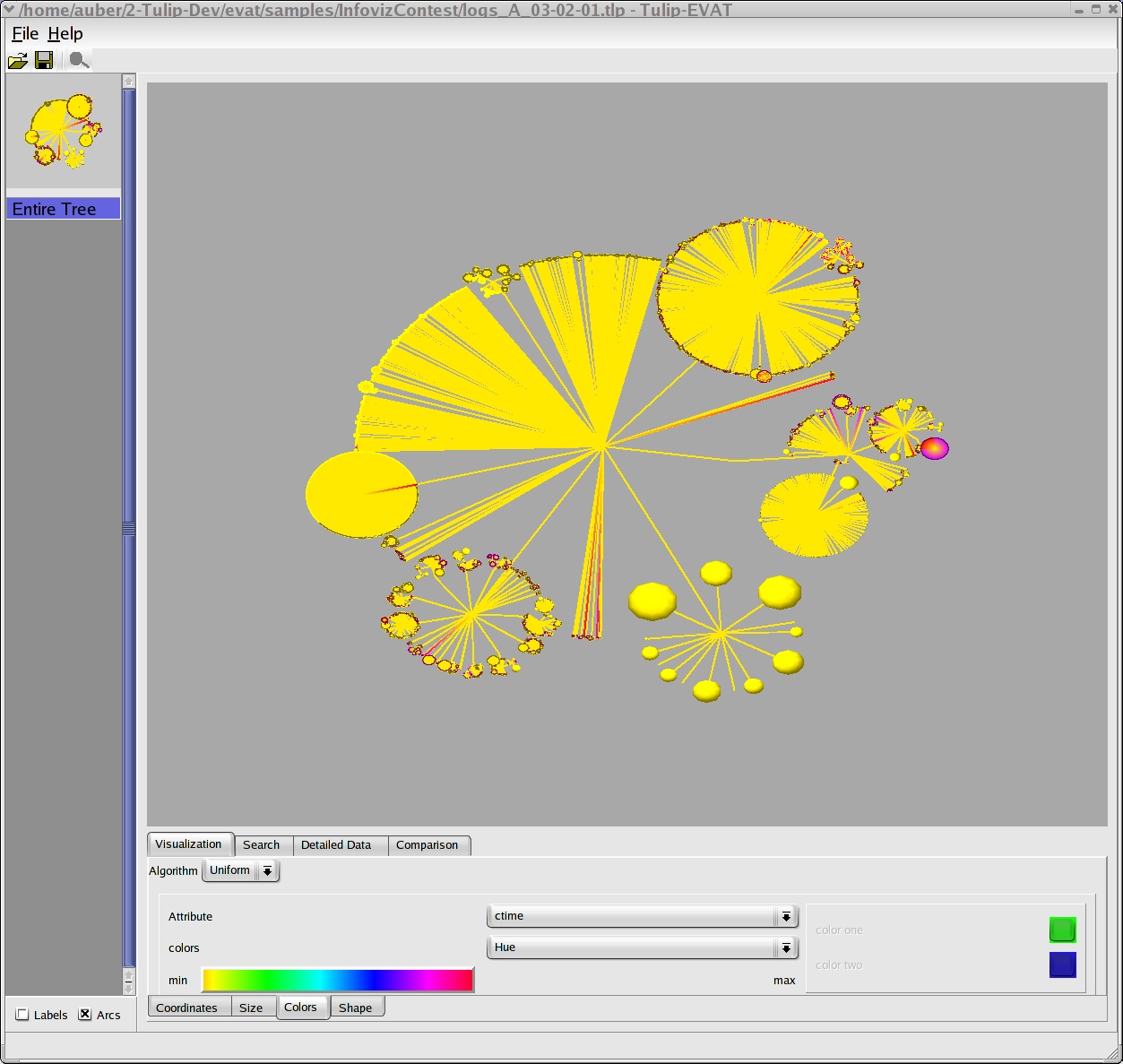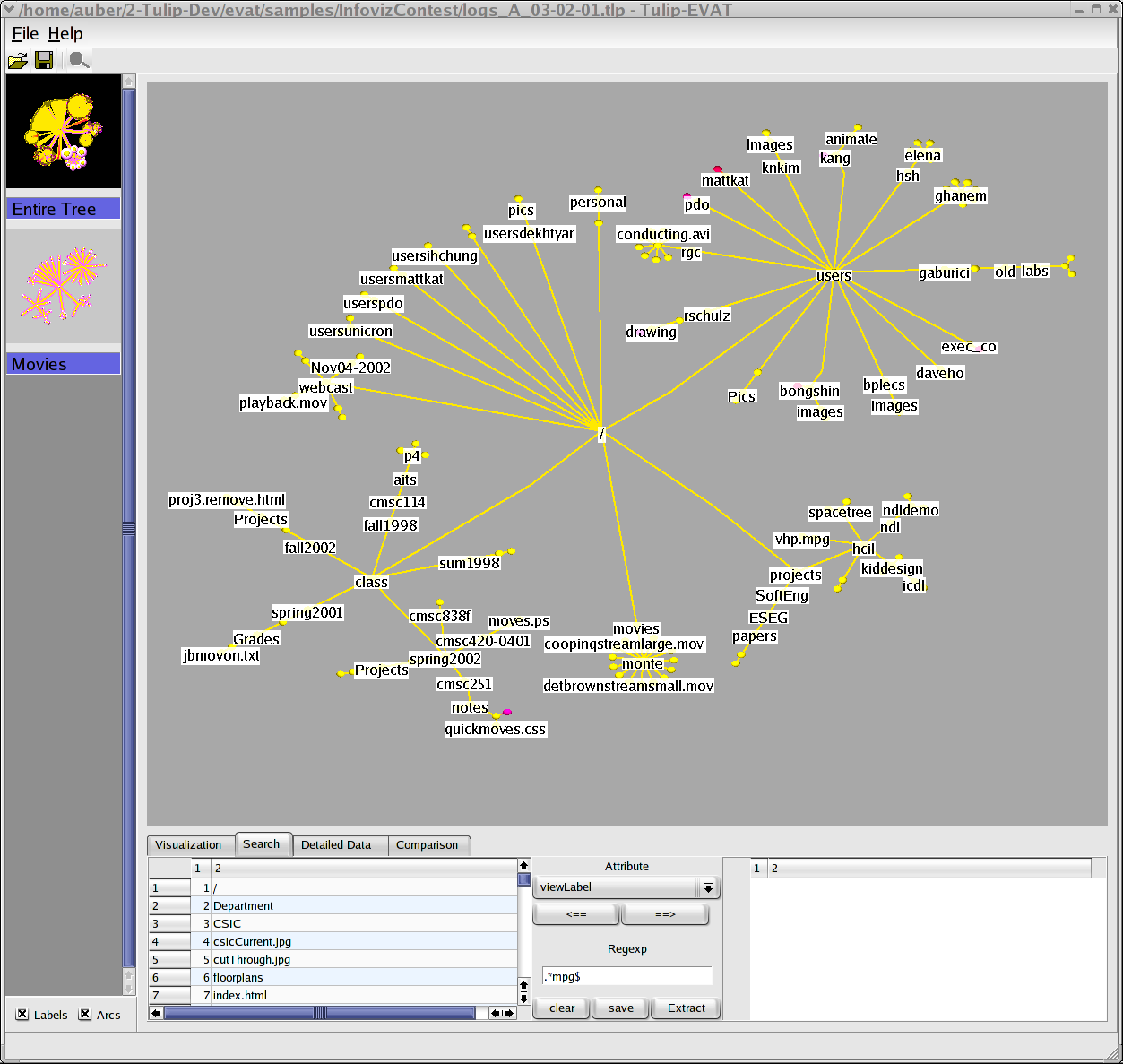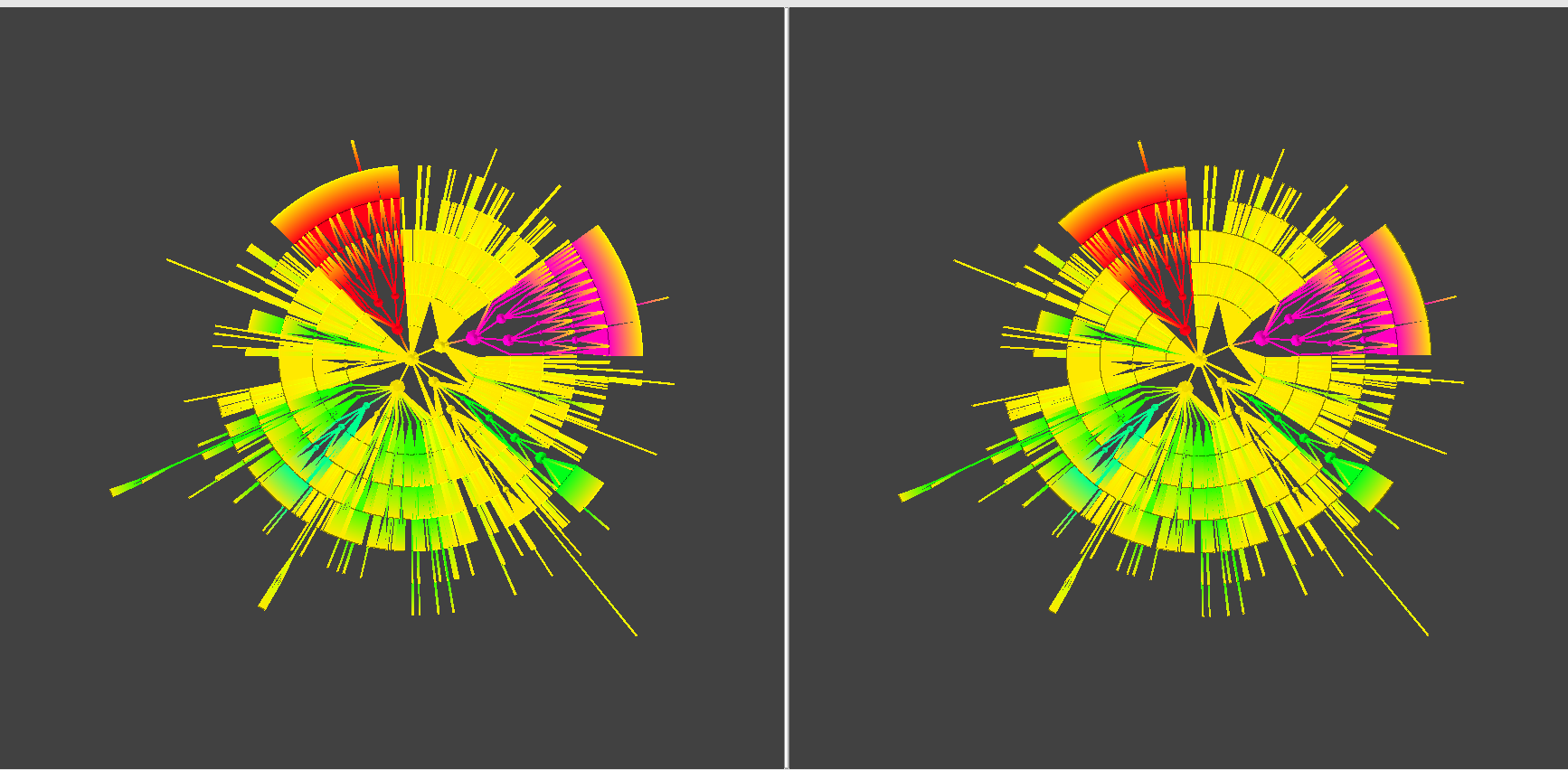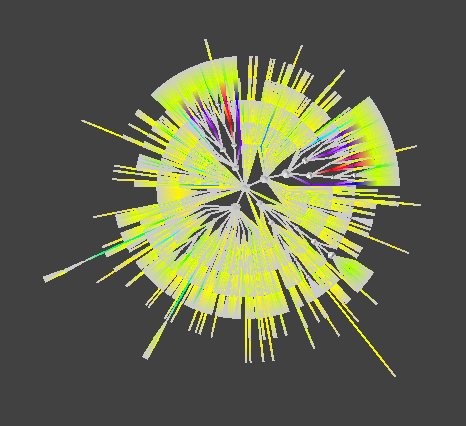As an example, suppose that you want to find the biggest recent files. Choose in the Size Menu the parameter size with a mapping algorithm exponential. Then go in the Colors menu and choose the parameter ctime and use the distribution algorithm and the hue component. The biger and pinker nodes are those you are searching.
You can also select in the search menu in advanced mode the two parameters with an and operator and a minimal value for each one. This will give a selection that you can save and explore in a new tree window.



